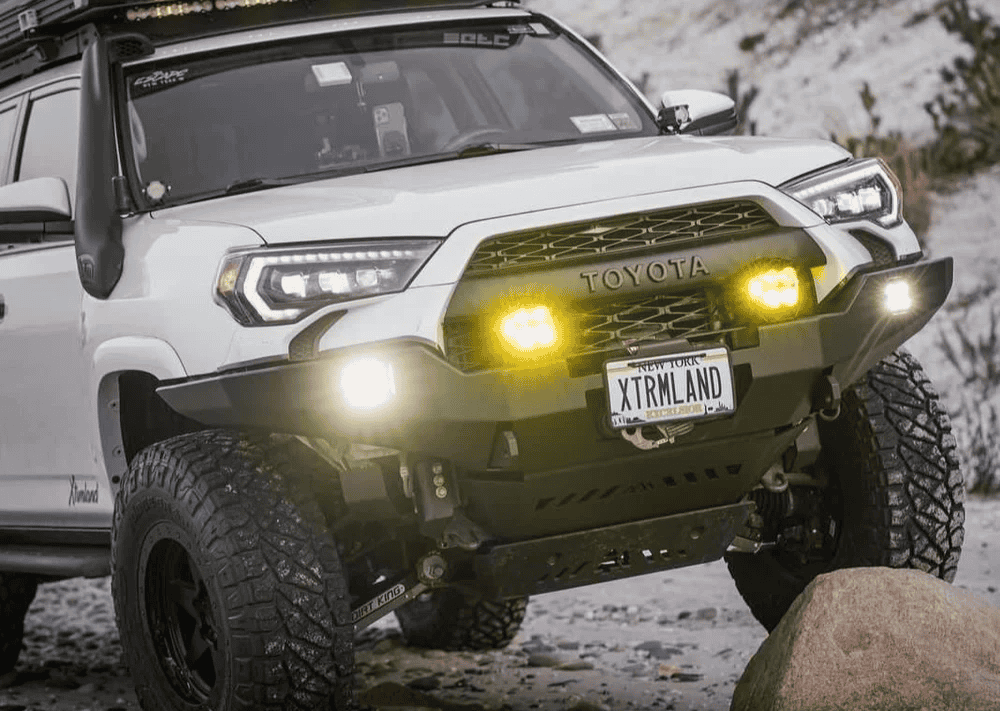Overland Vehicles

A rooftop tent changes how you travel by moving sleep off the ground and onto the vehicle. The core decision is soft shell versus hard shell. Soft shells usually fold out and create a large floor plan with an annex option, while hard shells open quickly and resist wind better thanks to a rigid lid. Either way, confirm your rack and roof can carry the dynamic and static loads. If you plan to drive rough roads, durability and mount security matter as much as comfort.
Materials drive comfort and longevity. Look for poly cotton ripstop with a UV resistant rainfly, high quality mesh that resists snags, and a mattress that does not pack out after a season. Venting is essential because temperature swings create condensation. A good overland rooftop tent includes high low vents, fly tension points, and canopy geometry that sheds rain without pooling. Ladder length and angle influence stability and ease of entry, so check the ladder rating and extension range for taller rigs.
Model names often reference capacity. The nomadic 3 roof top tent and similar three person tents balance footprint and weight for midsize SUVs and trucks. You will see terms like nomadic roof top tent and OVS RTT in community forums. When you read any overland vehicle systems review, look for details about fabric weight, hinge design, and whether the tent seals tightly when closed. An ovs nomadic 3, often called an ovs rtt, is discussed often because the layout and price hit a sweet spot for many travelers, but the same evaluation framework applies to any brand.
Soft shells pack big living space into a compact case but take a few extra steps to deploy. They excel for families who want room for gear inside the tent or an annex for kids and pets. Hard shells win for quick setup, slick aerodynamics, and better resistance to crosswinds. They usually fit accessory crossbars on top for solar or a light gear box, which is helpful when space is tight.
Know your rack system and limits. Dynamic load is what your roof can handle while driving, while static load covers people sleeping inside. A tent that weighs eighty to one hundred sixty pounds needs proper crossbar spacing and grade eight or better hardware. Spreading the load is key on camper shells and aluminum beds where point loads can deform the structure.
Condensation is normal when warm air meets cold fabric. Reduce it with cross ventilation, a breathable mattress underlay, and keeping wet gear outside. In storms, stake out fly lines to maintain fabric tension, and crack vents on the leeward side to let moist air escape. Dry the tent fully at home to prevent mildew and stale odors.
An overland awning extends living space, creates shade, and protects cooking zones from drizzle. Straight pull models are light and simple, while wraparound designs cover one hundred eighty to two hundred seventy degrees and shelter doors and tailgates. More coverage is convenient but adds weight and sail area. Decide whether you are comfortable using support poles and guy lines or want a freestanding design that handles mild gusts without extra stakes.
Fabric and structure define longevity. Look for ripstop with a high UPF rating, reinforced corners, and anodized aluminum arms. Wall kits add privacy and weather protection but bring more zippers, pegs, and packing volume. Mounts should be steel or thick aluminum with backing plates that tie into your rack, not just a single T nut. Think about awning height relative to your hatch or barn doors, and avoid trapping exhaust heat near fabric.
Practical decision points:
Mounting a rooftop tent and awning is part engineering, part ergonomics. Place the tent so the ladder deploys on the safe side of the vehicle, away from traffic and terrain hazards. Keep the weight centered between crossbars and as low as possible to preserve handling. Plan cable routes for camp lighting and any heated mattress pad to avoid pinches. For awnings, check door swing and hatch clearance so fabric and arms do not interfere with daily use.
On the trail, slow down for corrugations and pay attention to headwinds. A properly torqued mount with lock nuts, medium strength thread locker, and periodic bolt checks resists vibration. Carry spare hardware, a short socket set, and an extra guy line. At home, rinse dust and salt, then dry fabric before storage. A light coat of protectant on aluminum arms and a fresh seam seal on aging stitch lines add seasons to your setup.
If you want your system integrated cleanly, professional planning helps. Rack selection, crossbar spacing, and clearances around antennas and light bars all affect tent and awning placement. Our team can handle that planning and the install as part of a purpose built package. Explore Custom overland rigs for full vehicle concepts, see Custom overland upfit for tailored installs, and learn more at Why choose OZK Customs.
Bring your plans, we will bring the tools. Whether you are eyeing a compact three person layout like an ovs nomadic 3 or a fast opening hard shell, we can match the tent and awning to your travel style, route demands, and storage needs. That means fewer compromises at camp and more time outside.
Share your goals and let us build a reliable system that fits your rig and your routes.
Ready to dial in a reliable tent and awning system on a purpose built rig? Our Fayetteville Arkansas team designs and installs complete overland packages, from racks and mounting to power, lighting, and storage. Share a few details about your vehicle and travel style and we will spec the right RTT and awning combo, quote the install, and schedule your build.
ADDRESS:
6159 E Huntsville Rd, Fayetteville, AR 72701
PHONE:
(479) 326-9200
EMAIL:
info@ozkvans.com